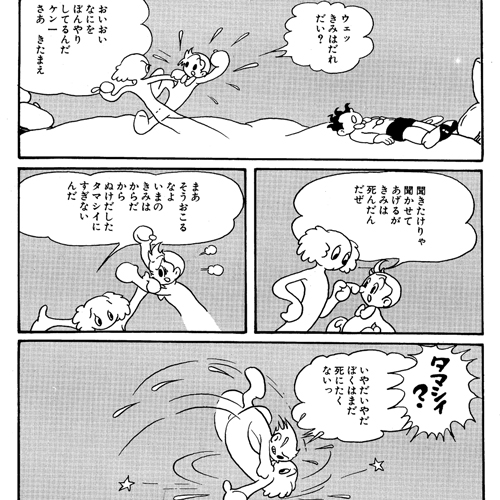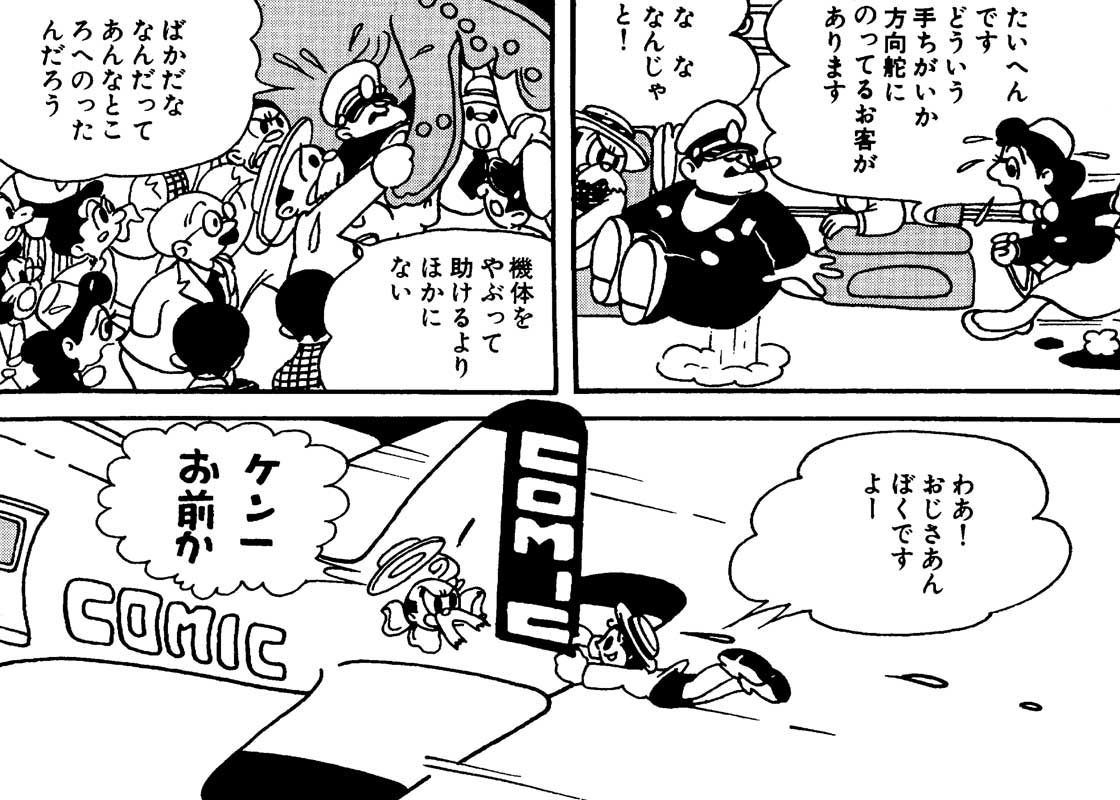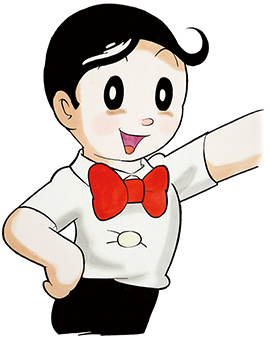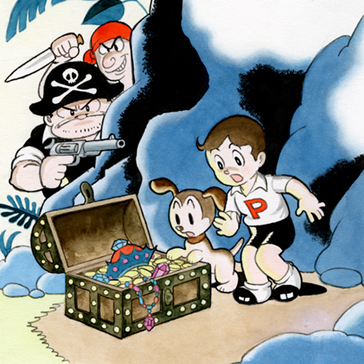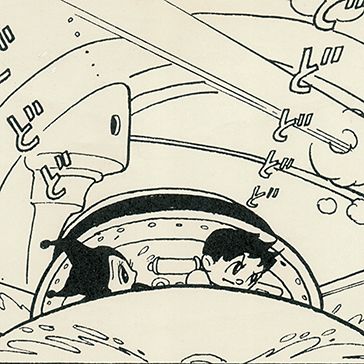
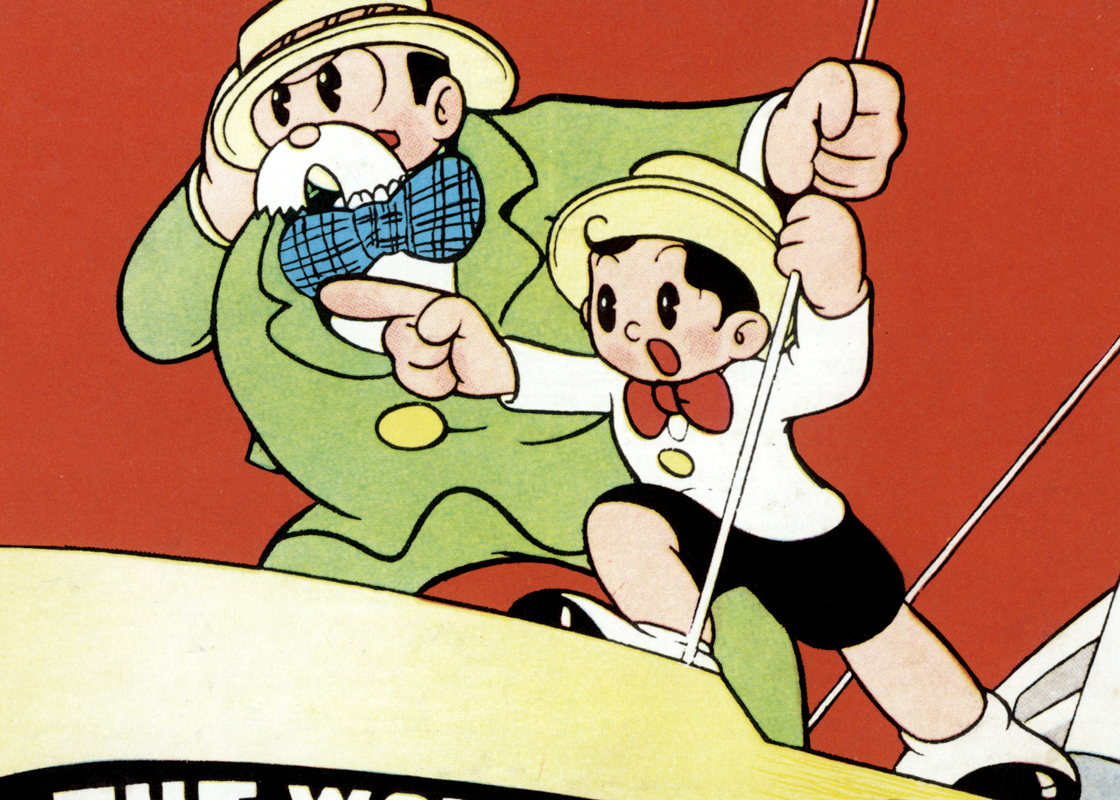
STORY
This is a fantasy about a boy who falls from an airplane, dies, becomes a ghost and travels throughout the world.
Kenichi and his uncle Higeoyaji depart for a round-the-world trip.
Although he misses the airplane, Kenichi manages to cling to the plane's rudder, but eventually falls into the sea and dies.
But according to the ledger in heaven, it was not Kenichi's fate to die this way.
So, he tried to go back into his body, but he could not find it anywhere.
Taken by a guide from heaven named Halloween, Kenichi follows Higeoyaji while looking for a body to slip into.
Shanghai, India, Egypt, Italy, France, America, ... Kenichi and Higeoyaji continue their unexpected and eventful journey while exploring the mysteries of the world.
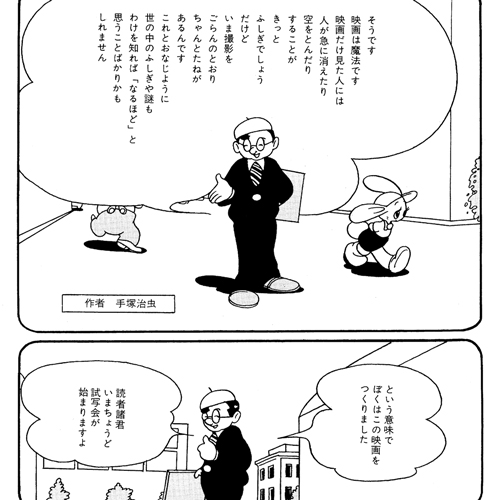
DESCRIPTIONS
January 15, 1950
Published as a book (Iemurabunhyodo)
Overseas traveling of civilians was severely restricted in Japan right after the defeat of the Pacific War, when "The Wonderful Journey" was written.
This work depicted travel throughout the world as fantasy, and indeed such travel was nothing but a dream for most of the people of the time.
The whole story is composed like a movie. The idea that the ghost successively moves from one body to another is strongly influenced by the American movie "Here Comes Mr. Jordan" (1941).
At that time, American movie masterpieces produced before the war were successively screened in Japan, and were quite well received by the people, who were hungry for entertainment.
Tezuka Osamu was no exception; he too watched movies one after the other.
It was in 1964 when overseas travel for the purpose of sightseeing was finally allowed for Japanese civilians, thanks to drastic reforms to the "Foreign Exchange and Foreign Trade Control Law" (established in 1949).
